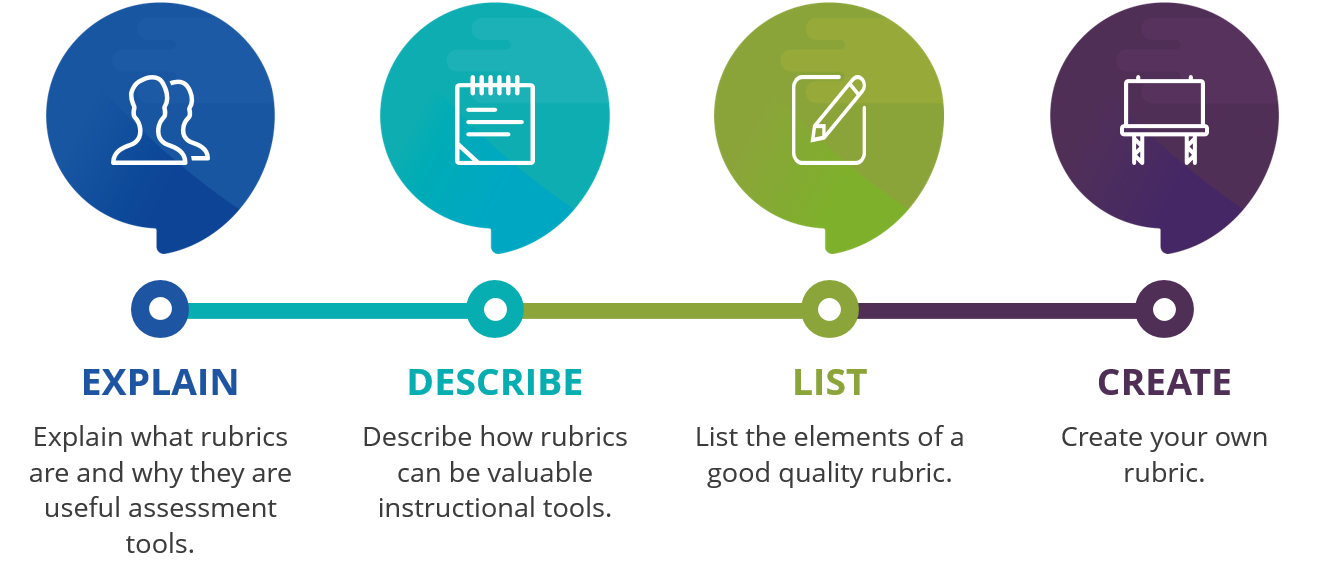Unit 39 Tools to support Assessment (Rubrics)


Assessment is one of the most important parts of teaching. After all, it is the best way we have of knowing what our learners are learning. It is not necessarily the same as what we are teaching.
Doing assessment well (whether it is formative or summative), requires that we are clear about what we are assessing and what success looks like. If you area assessing a learner’s answer to a Maths problem, this is relatively straightforward. What is correct and incorrect and quite clear.
But what if you are assessing a piece of creative writing, or a presentation, or a group project or a piece of art. In these cases, assessment is far more subjective. Rubrics are simple but powerful tools that help us with these kinds of assessment and help us to assess fairly and consistently.
By the end of this unit you will be able to (replace with image):

Click on the link below to begin your lesson:

For this assessment, you are going to create and share your own analytic rubric. Before you start, have a look at the rubric that will be used to assess the quality of your rubric.

![]()
Teachers' ICT Integration Course by Matthew Goniwe School of Leadership and Governance is licensed under a Creative Commons Attribution-ShareAlike 4.0 International License with the exception of the following resources:
The Source for Learning, Inc. (2017). Why use rubrics?
Quality Rubrics. (2017). Presentation Rubric Revised.
All content not licensed under a Creative Commons license is all rights reserved, and you must request permission from the copyright owner to use this material.